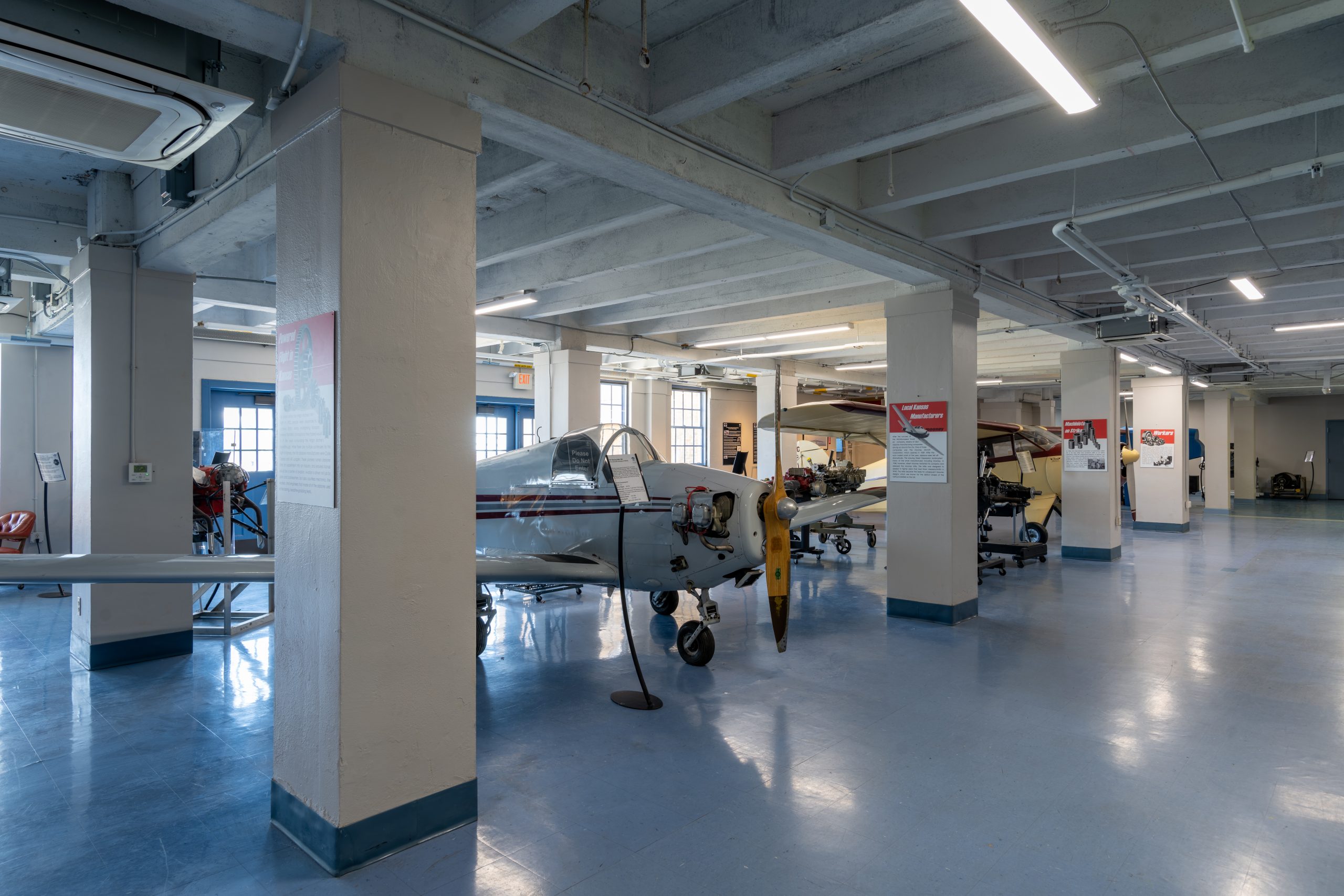
For years before the Wright Brother’s first flight in 1903, people were desperate to achieve flight. Many enterprising Kansans created fantastic contraptions they hoped would fly in the years surrounding the Wright Brother’s breakthrough. While there are multiple contenders for the flight in Kansas, the first airplane manufacturers were Clyde Cessna and AK Longren. These pioneers turned airplanes from an experiment into an industry, and ensured Kansas would be a center of aviation. Aviation is driven not just by pilots and businessmen, but also countless mechanics, line workers, and engineers that made all of the airplanes used in the daring, headline-grabbing feats.
Mooney Mite After the success of the Wichita-based Travel Air Company, dozens of new airplane manufacturing companies sprung up around the city. One of those companies was The Mooney Aircraft Corporation, which opened in 1929. After the stock market crash later that year, airplane sales fell off dramatically. The ensuing Great Depression bankrupted many of the small manufacturers including Mooney. In 1948, however, Albert Mooney restarted his company and released the Mooney Mite. The Mite was designed to appeal to fighter pilots that had flown Messerschmitts in WWII. The Mite became the basis for subsequent Mooney designs, which are known for the distinct shape of the vertical stabilizer on the tail.
Machinists on Strike In 1966, the International Association of Machinists called for a 43 day strike that shutdown 60% of all airline operations. After the widespread adoption of jetliners, the country’s five airlines posted record breaking profits in 1965. These profits were not distributed to workers, however, pushing them to organize and demand a share of the profits they had created. The strikers turned down two lowball deals before accepting a 6% raise.
Workers Designing and building airplanes requires teams of well-trained engineers and machinists. Though much of the ground work for airplane design was laid in the twentieth century, new challenges face the aviation industry. Finding a way to reduce the devastating impact that the aviation industry has on the atmosphere will surely be a challenge for future generations. The world of aviation needs new talent that can bring innovative solutions to problems such as these in order to adapt to our changing world. Maybe you or someone you know could be the one to make a difference.
